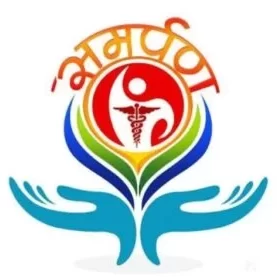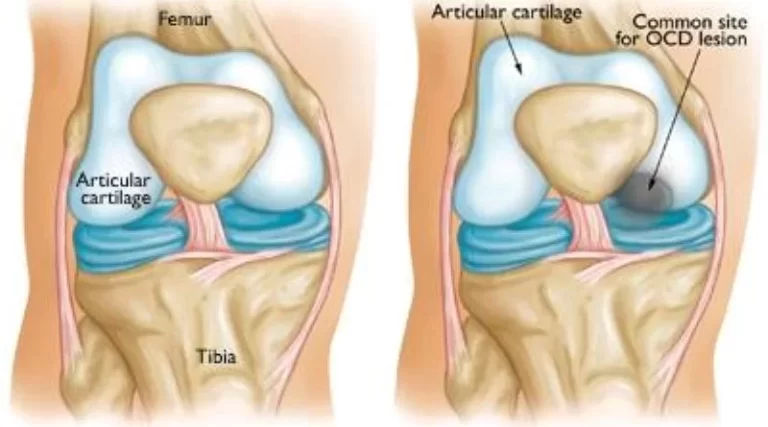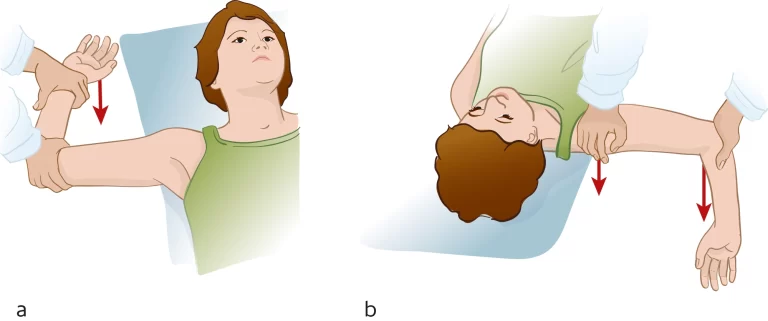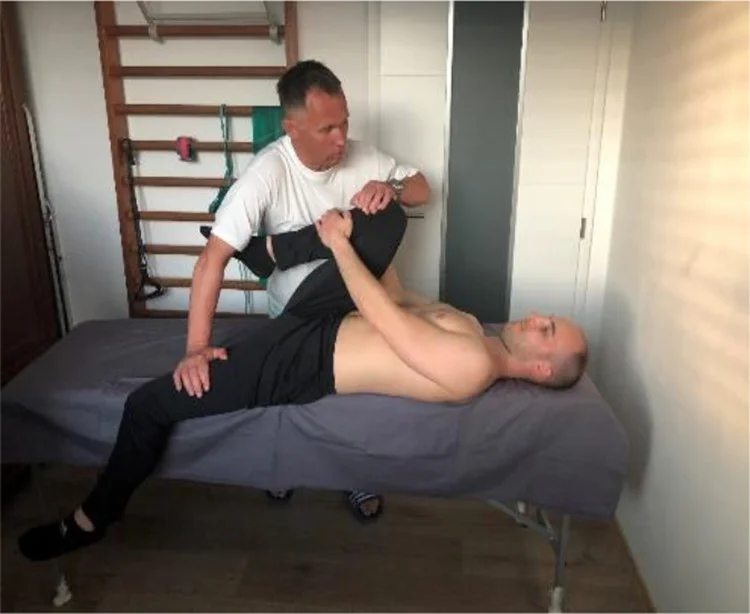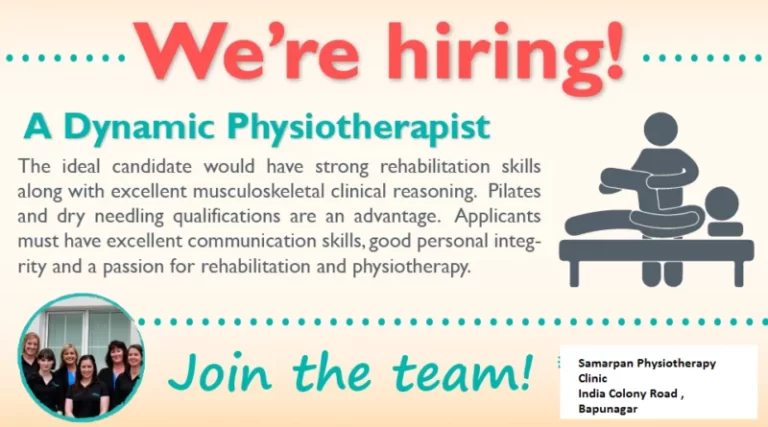12 Best Exercises for Ankylosing Spondylitis
Table of Contents
Overview
Exercise is crucial for managing ankylosing spondylitis, a chronic inflammatory condition that mostly affects the spine and can result in excruciating pain and stiffness. For people with ankylosing spondylitis, regular exercise can help preserve flexibility, boost posture, lessen discomfort, and improve overall living conditions.
Exercises created especially to resolve this issue can help reduce its consequences and promote better spine health. This article examines the best 12 exercises that people with ankylosing spondylitis can use to improve their daily lives and manage their symptoms.
Joint flexibility is maintained or increased and stiffness is decreased by exercises that stretch the affected areas, such as the spine, hips, and chest. Stretching gently can help release tension in the muscles and promote better posture. Stretches for the neck, chest, and lower back can help patients with ankylosing spondylitis in addition to standard workouts.
Increasing and maintaining muscle strength to support the spine and enhance overall stability is the aim of strengthening exercises. Ankylosing spondylitis-specific exercises usually focus on the back, legs, and core. Strengthening activities include resistance training with weights or resistance bands and low-impact aerobic sports like walking, cycling, and swimming.
Cardiovascular workouts, such as walking, swimming, and cycling, can improve overall fitness, strengthen the heart, and boost lung capacity. These exercises also aid with weight management, which is crucial for those who have ankylosing spondylitis because being overweight can worsen symptoms and place undue strain on the joints.
What is Ankylosing Spondylitis?
Ankylosing spondylitis (AS) is a painful kind of inflammatory arthritis that gradually worsens. It mainly affects the spine, but it can also affect the eyes, digestive system, joints, tendons, and ligaments. This unforeseen sickness affects people in different ways. Exercise is a crucial component of the condition’s treatment and should be given high attention.
The majority of people with ankylosing spondylitis feel pain and stiffness, therefore staying flexible and fit might help you manage the condition. Regular exercise has several advantages, including reducing discomfort, improving flexibility, and maintaining good posture.
Causes of Ankylosing Spondylitis:
Doctors don’t know what causes ankylosing spondylitis. However, studies suggest that the condition may arise as a result of both environmental and genetic factors. Although the HLA-B27 gene increases the risk of ankylosing spondylitis, it does not ensure that you will get the illness, according to researchers. Numerous individuals who possess the gene do not get ankylosing spondylitis, suggesting that environmental factors might be involved.
HLA-B27 is the primary gene known to increase the risk of developing ankylosing spondylitis, but investigators are continually finding a lot more gene alterations that could contribute to the illness.
Ankylosing spondylitis symptoms
Lower back and/or hip discomfort and stiffness are the most typical signs of ankylosing spondylitis. Other areas of the body or spine may experience the symptoms over time. Some people may experience increased pain in the middle of the night or after prolonged sitting because the pain typically worsens during rest or inactive times. Generally, discomfort can be reduced by exercise and movement.
While some people have modest discomfort that comes and goes, others have persistent, Painful agony. Both mild and severe symptoms of ankylosing spondylitis can worsen during “Obtains” and get better during Removal.
Other symptoms, including the following, could appear since the disease can affect other parts of the body:
- Inflammation, stiffness, and pain in other joints, such as the ankles, knees, shoulders, and ribs.
- breathing difficulties if the rib joints are damaged.
- The condition is an inflammatory eye disorder that results in pain and impaired vision.
- Fatigue, or a profound sense of exhaustion.
- weight loss and appetite loss.
- skin rashes, psoriasis in particular.
- loose stools and soreness in the abdomen.
Why exercise if you have ankylosing spondylitis?
Exercise strengthens the paraspinal and core muscles. Pressure on the back’s joints is reduced by maintaining stronger paraspinal and core muscles, which is crucial for joint-generated pain diseases like ankylosing spondylitis. To build your stabilizing muscles, however, resistance training can be just as beneficial as aerobic activities like walking and swimming.
Cardiovascular activity tones and maintains supporting muscles, increases blood flow to tissues, and enhances the transport of nutrients to joints and discs. All of this contributes to improved musculoskeletal health and function.
Benefits of Exercises:
Decreased Ankylosing Exercise can help with spondylitis symptoms and improve strength and flexibility.
- Aids in correcting posture
- Boost your strength, balance, and mobility
- Enhancing the condition of the heart
- Improving the capacity for breathing
- Lowering blood pressure
- Maximizing bone density
- Assisting with weight management
Benefits of exercises:
The chronic inflammatory disease known as ankylosing spondylitis (AS) mostly affects the spine and can cause stiffness and pain. Although it is typically regarded as a difficult condition, some people experience some surprising advantages, like:
Enhanced Capacity to Handle Pain
- A higher pain threshold is frequently developed by people with AS, which can help them cope with suffering in other spheres of life.
Enhanced Self-Control in Fitness and Health
- Many people adopt healthier habits, such as regular stretching, yoga, and strength training, because exercise is essential for treating AS. This improves their general fitness and well-being.
Improved Posture and Body Awareness
- AS promotes awareness of posture and body mechanics, which can enhance general movement efficiency and prevent further musculoskeletal issues.
Increased Mental Strength
- When facing problems, having a chronic illness frequently results in increased emotional strength, endurance, and problem-solving abilities.
Possibility of a Helpful Community
- Through patient organizations, social media, and online forums, many people with AS discover strong support systems that foster new friendships and common experiences.
Eligibility for Specific Benefits
- People with AS may be eligible for medical assistance programs that enhance quality of life, job modifications, or disability payments in some nations.
When starting an exercise program, the following safety precautions should be considered:
- There are a few things you can do before starting any kind of fitness program to get the most out of it. Consult your doctor or physical therapist to find out which exercises are best for your particular issue.
- When you’re in pain, it’s important to listen to your body and avoid hurting yourself. Even while soreness is a typical side effect of exercise, excessive effort may be the cause of persistent or severe discomfort.
- By keeping a proper stance and technique, recurrent injuries can be prevented. If you’re not sure how to follow a fitness program, think about consulting a physician. Your muscles and joints will be more prepared for exercise if you warm up first.
- Maintaining good posture is crucial when working out.
- to ensure that your body has adequate time to Get better between workouts.
- Stay away from intense physical activity.
- Warm up completely before working out.
- Stop exercising if you feel any unexpected pain.
- Obtain the Correct Balance
- Stay hydrated.
12 Best Exercises for Ankylosing Spondylitis
Deep Breathing Exercise
Diaphragmatic breathing, another name for deep breathing exercises, is a technique that enhances oxygen flow, lowers tension, and encourages relaxation.

How to do
- Locate a comfortable position. Find a peaceful spot to sit or lie down.
- With one hand on your chest and the other on your tummy, ease your shoulders.
- As you fill your lungs with air, take a deep breath through your nose, extending your abdomen rather than your chest.
- For a few seconds, hold your breath (optional).
- Breathe out gently through your lips, letting go of all the air as you feel your tummy drop.
- For ideal relaxation, repeat for five to ten minutes.
Side stretch exercise
The side stretch exercise is a fantastic method to increase core mobility, ease side-of-body tension, and improve flexibility.
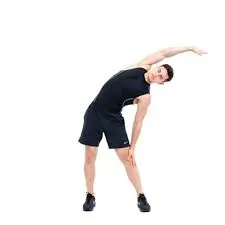
How to do:
- Stand straight with your feet hip-width apart.
- Straighten your right arm and raise it above your head.
- Stretch your left hand along the side of your leg or place it on your hip.
- Feel the stretch down your right side as you gently bend to the left.
- Hold while maintaining an active core for 15 to 30 seconds.
- Switch sides and go back to the center.
- Do this two to three times on each side.
The benefits of Side Stretching
- increase the flexibility of the spine.
- decreases torso rigidity.
- improves core strength and posture.
- relieves side and lower back stiffness.
Knee to chest stretch
The knee-to-chest stretch is a straightforward yet powerful way to increase flexibility, release tension in the lower back, and loosen the hips.
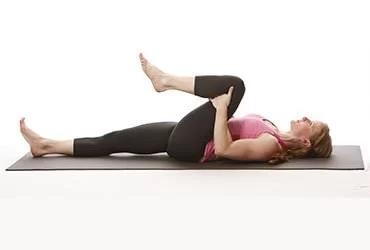
How to do
- On a comfortable surface, like a yoga mat, lie flat on your back.
- Keeping the other leg outstretched on the floor, raise one knee to your chest.
- Using both hands, gently push your knee Using both hands, push your knee against your chest. your chest. Keep your back flat against the floor and hold for 20 to 30 seconds.
- Repeat with the other knee after releasing the leg.
- You can sway softly from side to side while simultaneously bringing both knees to your chest for a deeper stretch.
Hamstring Stretch
The hamstring stretch is excellent for increasing the range of motion, decreasing stiffness, and avoiding lower back and leg issues.

How to do
- Maintain proper posture when sitting on the floor or in bed.
- Place your heel on the floor with your toes free and pointing up, then straighten your knee joint with the leg you want to stretch.
- Lean forward from the hips and maintain a flat back as you move your weight ahead.
- Whenever the inside of your leg starts to stretch, keep bending your trunk forward.
- Hold this position for a little bit longer.
- Return to your neutral position
- Then relax.
- Continue with the other leg.
- Repeat five to 10 times.
Cat-Cow Stretch (Camel)
The Cat-Cow Stretch, sometimes referred to as the Cat-Camel Stretch, is a gentle spine mobility exercise that promotes proper posture, eases tension, and develops flexibility. It is commonly used in yoga, physical rehabilitation, and warm-ups.
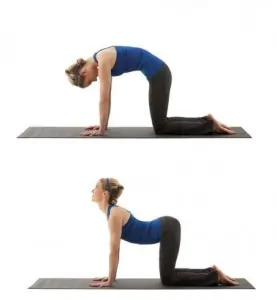
How to do
- Start in table pose, with your spine neutral, on your hands and knees. Taking a breath and moving
- Put yourself in cow pose by pushing your chest forward, raising your sit bones, and letting your tummy drop.
- Raise your head and look directly ahead while letting your shoulders drop away from your ears.
- Pull your pubic bone forward, tuck your tailbone in, and round your spine outward as you exhale to enter cat posture.
- Don’t push your chin to your chest; instead, let your head drop to the ground.
- Then relax.
Bird dog Exercise
The Bird Dog is an excellent lower back, balance, and core stability exercise. It works the shoulders, glutes, lower back, and abs, making it a good exercise to improve posture and minimize the chance of injury.
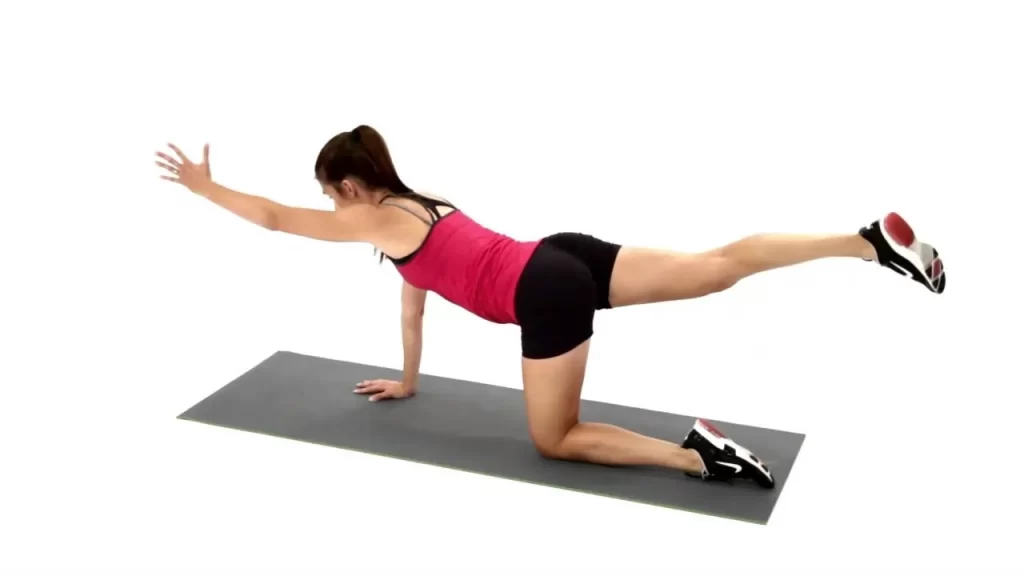
How to do
- Start on your hands and knees, then go into the tabletop position.
- Put your hands beneath your shoulders and bend at the knees.
- Make sure your abs are contracting to keep your spine neutral.
- Press your shoulder blades together.
- Raise your right arm and left leg while keeping your hips and shoulders parallel to the floor.
- To look at the ground, lower your chin toward your chest and extend the back of your neck.
- Hold this position for a brief time before going back to the beginning.
- Raise your right leg and extend your left arm, then maintain this posture for a little while.
- Then relax.
- Three to six repetitions of this workout are required.
Glute Bridges
Glute Bridges Also relieve lower back strain and enhance stability and posture. Additionally, it is simple to adapt for varying levels of fitness and is beginner-friendly.
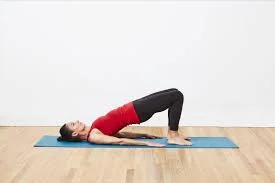
How to do
- Start by settling into a cozy position on the mattress.
- Now stretch your knees while keeping your feet flat on the mattress.
- Next, tighten the muscles in your abdomen.
- Raise your upper body.
- Please maintain your arms by your sides.
- For a few seconds, maintain this position.
- Then drop your body.
- Then return to your neutral position.
- Then relax.
- Three to six repetitions of this workout are required.
Seated spinal twist
An excellent stretch for increasing spinal flexibility and mobility is a seated spinal twist. Additionally, it enhances posture and relieves lower back pain.
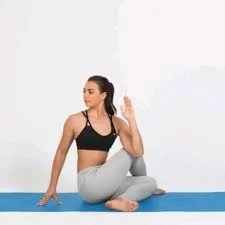
How to do
- If it is more comfortable for you, sit up straight on the floor with your legs straight out in front of you or, if you prefer, with your knees bent and your feet flat on the floor.
- Outside of your right thigh, close to the knee, place your left foot on the ground. Either bend your right leg so that your foot is flat on the floor or keep it extended.
- For support, place your right arm on the floor behind you. For added comfort, place a block or pillow beneath your hand.
- As you exhale, gently twist your torso to the right, trying to bring your left elbow to the outside of your right knee (or thigh). Your spine can be stretched by doing this.
- Try not to twist too hard, and keep your shoulders loose and your chest open. Confirm that your spine and neck are aligned.
- Hold the twist while taking deep breaths for 20 to 30 seconds.
- Take a breath to gradually relax and return to the initial position.
- Place your right foot outside your left leg and twist left to repeat on the opposite side.
This twist promotes digestion, relieves tension in your shoulders and back, and increases spinal flexibility and mobility.
Superman Exercise
A great exercise for strengthening and improving posture, the Superman pose works the muscles in the shoulders, glutes, and lower back.
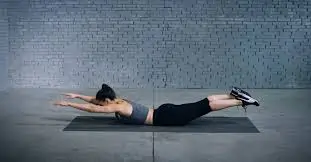
How to do
- Stretch your arms in front of you and your legs straight out behind you while lying face down on the floor or a yoga mat.
- Pulling your navel in toward your spine and ensuring that your body is in alignment will activate your core.
- As though you were Superman, raise your legs, arms, and chest all at once off the ground. Keep your arms out in front of you, and squeeze your glutes to raise your legs.
- Maintain the posture for five to ten seconds, paying attention to keeping your neck in line with your spine and your back muscles active.
As your power increases, you can also raise the number of sets or the length. By engaging important muscle groups that are frequently weakened by extended sitting, this pose is excellent for strengthening the lower back and enhancing posture.
Plank Exercise
The plank is a great exercise that strengthens your shoulders, arms, legs, and complete core. It’s a fantastic motion for increasing stability and strength.

How to do
- The plank position should be started with your face down and your forearms and toes on the floor.
- Your elbows are precisely beneath your shoulders, and your forearms are pointing forward.
- Your head should be relaxed right now, and you should be looking at the floor.
- Squeeze the muscles in your abdomen.
- From your ears to your toes, maintain a straight body without stooping or bending.
- This is the stance of the neutral spine.
- Keep your shoulders down and avoid bringing them up to your ears.
- Your feet’s toes ought to be beneath your heels.
- Maintain this posture for a short while.
- Then return to your neutral position.
- Then relax.
- Three to six repetitions of this workout are required.
Bicycle crunches
The rectus abdominis and obliques are two abdominal muscles that can be effectively worked with bicycle crunches.
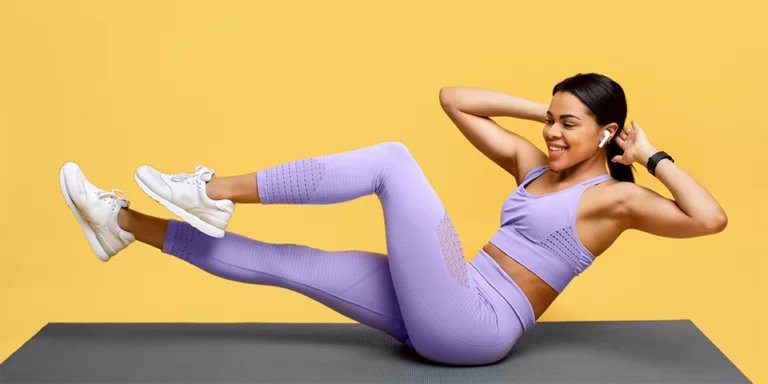
How to do
- Place your feet flat on the ground and bend your knees while lying on your back on a mat. To minimize stressing your neck, place your hands behind your head without tying your fingers together.
- elevate your legs so that your knees are bent at a 90-degree angle and elevate your shoulders off the ground, bringing your elbows to your knees.
- As you rotate your torso to bring your left elbow toward your right knee, extend your right leg out at a 45-degree angle. Try to fully extend your right leg without letting it touch the floor at the same moment.
- To switch sides, extend your left leg straight out and twist your torso so that your right elbow is close to your left knee. Continue pedaling with alternate sides, much like you would on a bicycle.
- Throughout the exercise, maintain an engaged core and avoid pulling on your neck. Concentrate on twisting and bringing your elbow toward your knee with your abs.
- Do two to three sets of 15 to 20 repetitions per side.
Swimming
Swimming is a great full-body exercise that is easy on the joints and enhances cardiovascular health, strength, and flexibility. Depending on the strokes you employ, it works almost every muscle group, including the back, arms, legs, and core.

Benefits of Swimming:
- Cardiovascular Health: Swimming is a great aerobic exercise that strengthens the heart and lungs.
- Strength and Endurance: The water’s resistance helps to strengthen the arms, legs, and core in particular.
- Low-Impact: Swimming is easy on the joints since the water supports your body, which makes it perfect for anyone with arthritis or injuries.
- Flexibility: Swimming, particularly with strokes like the backstroke and breaststroke, helps improve flexibility.
- Stress Relief: Swimming’s rhythmic motion and the calming qualities of the water can both assist in lowering stress and enhance mental well-being.
Ankylosing spondylitis: Posture Training
Ankylosing spondylitis sufferers may attempt to improve their posture in an attempt to relieve their back pain. Over time, posture adjustments may help reduce joint and muscle stiffness, weakness, and pain. Back pain can be reduced and posture can be improved with exercises that focus on the core, or the muscles that support the back and abdomen.
People can maintain and attain good posture by
- Frequent physical activity
- Including specific core-supporting exercises in their regimen and performing them twice or more frequently each week
Stretches for posture training When someone with ankylosing spondylitis struggles with their posture, several exercises, such as the two below, can assist. They should be conscious of their posture and try to correct it when performing daily duties like walking, sitting at a desk, and watching TV.
Exercise for posture 1:
- As you stand against the wall, position your shoulders, heels, bottom, and back as near to the wall as you can.
- Don’t raise the head; instead, push it back against the wall.
- Hold this position for a few minutes.
- Then return to your neutral position.
- Then relax.
Exercise for posture 2:
- Looking straight ahead while lying on your stomach.
- Place your hands beside you.
- Keeping your knee straight, raise one leg off the floor.
- Lift the other arm till it is facing it.
- Hold this position for a few minutes.
- Then return to your neutral position.
- Then relax.
Exercise for posture 3:
- Stand with your back against a wall.
- Place your feet shoulder-width apart and move away from the wall.
- Slowly move your back along the wall.
- Make an effort to sit in a chair-like position where your thighs are parallel to the floor.
- Hold this position for a few minutes.
- Then return to your neutral position.
- Then relax.
Did you stop working out when?
- If your physician suggested that you take a few days off.
- See a doctor if you start experiencing pain while exercising.
- Headache
- fever
The Top 12 Ankylosing Spondylitis Exercises to Reduce Stiffness and Increase Mobility
Avoid exercise for ankylosing spondylitis
- High-Impact Exercises
- Heavy Weightlifting
- Twisting or Rotational Movements
- Exercises that Overload the Spine
- Prolonged Static Postures
Summary
People who have ankylosing spondylitis can benefit from exercise in several ways. It enhances cardiovascular health, strength, flexibility, and posture. Frequent exercise may reduce the chance of fusion and increase mobility.
As a degenerative disease, ankylosing spondylitis can worsen with time. As the illness develops, the joints and bones of the spine may fuse, causing a loss of flexibility and mobility. Pain and fatigue are among the main symptoms that could worsen.
People can work with a physical therapist to develop a personalized plan that suits their requirements, hobbies, and way of life.
FAQs
Which joint is most affected by ankylosing spondylitis?
The axial spine is impacted by the chronic inflammatory disease known as ankylosing spondylitis (AS). Increasing spinal stiffness and chronic back pain are the most typical symptoms of this condition. The spine, sacroiliac joints, fingers, peripheral joints, and entheses are among the features.
What differentiates ankylosing spondylitis from spondylosis?
An inflammatory disease that affects the joints in the back is called the condition. Spondylosis is caused by the degeneration of your spine rather than inflammation.
What is the best treatment for spondylosis?
Conservative approaches are generally effective in treating the symptoms of spondylosis. Physical therapy and painkillers are non-operative treatments. Surgery may be required to relieve pressure if spondylosis has limited the spinal cord or spinal nerve roots.
Which symptoms of ankylosing spondylitis are more common?
Stiffness and back pain
The condition of arthritis
How long does it take to recover from ankylosing spondylitis?
Depending on the severity of the condition and the affected joints, each person’s healing process is unique. It could take a month or a year to fully recover.
Is walking beneficial for someone with ankylosing spondylitis?
Walking can be a very helpful low-impact exercise for people with ankylosing spondylitis. This is the best way to encourage physical activity in the body. Start with short walks of five to fifteen minutes, then work your way up to thirty minutes at a time.
Is stretching helpful for ankylosing spondylitis?
Frequent gentle stretching is advised for people with ankylosing spondylitis. It helps to do these twice a day. You may feel more rigid if you perform them right away in the morning.
What kind of sleep is best for someone who has ankylosing spondylitis?
Elevating your neck may result in a twisted spine and joint pain. Although it’s best to avoid using pillows when you sleep, if you can’t, you can use a small pillow or a folded towel. Generally speaking, placing cushions behind your legs or back was not advised.
How may ankylosing spondylitis be prevented from progressing further?
In addition to improving your posture and range of motion, exercise helps keep your spine from becoming stiff and sore. In addition to being active, physiotherapy is a crucial part of treating AS. A physiotherapist can design a personalized workout regimen and guide the most effective exercises.
How does exercise help people with spondylitis?
It can keep you flexible and range of motion while easing pain. It also seems to relieve the symptoms related to posture, breathing capacity, stiffness, and exhaustion. It’s wise to make an effort to engage in physical activity every day because of this.
What is the best posture for those who have ankylosing spondylitis?
To keep your spine straight, sit in a chair with a high, strong back. Check that your tailbone rests on the chair’s back. Try positioning a small cushion, rolled-up towel, or lumbar support behind your lower back for extra support. Your feet should be flat on the floor, and your knees should be at a straight angle.
Does yoga help people with spondylitis?
The back muscles that support the spine can be stretched and strengthened with regular yoga practice. It might help those with ankylosing spondylitis manage their pain.
What is the main cause of spondylitis?
Spondylosis is the result of spinal wear over time. This includes the disks or cushions that rest between the cervical spine’s vertebrae and the joints that unite its bones. One or more nerve roots may eventually be compressed or under pressure as a result of these alterations. The spinal cord becomes involved in more serious cases.
How is the spine straightened by ankylosing spondylitis?
Exercise: Establish a regular exercise schedule to maintain your range of motion. The muscles you stretch and strengthen support and maintain the proper alignment of your spine. Make sure to strengthen your core muscles and stretch your hip and hamstring muscles.
Is it possible for someone with ankylosing spondylitis to lead a normal life?
The majority of people with ankylosing spondylitis can lead normal, fulfilling lives. Despite being a chronic condition, ankylosing spondylitis rarely causes substantial disability.
References:
- On December 13, 2023, P. Tirgar. Mobile Physiotherapy: The Best Exercise for Ankylosing Spondylitis? A mobile clinic for physical therapy. The best exercises for ankylosing spondylitis can be found at https://mobilephysiotherapyclinic.in.
- Top Workouts for People with Ankylosing Spondylitis. (n.d.). WebMD. https://www.webmd.com/ss/slideshow-exercises-for-ankylosing-spondylitis
- 2019 February 8; Cherney, K. Ankylosing Spondylitis Self-Care Tips: 5. The website Healthline provides self-care suggestions for people with ankylosing spondylitis.
- On September 13, 2023, Franks, I. Ankylosing spondylitis exercises and postures. medicalnewstoday.com/articles/317854#summary
- Exercise for ankylosing spondylitis that will keep you active. July 14, 2023. Take Care of Yourself. Exercises for Ankylosing Spondylitis: A Guide to Help You Stay Active
- Image 8, Sutherland, M. (2020, June 5). 4 Best Neck Stretches for Tension Headaches. Morgan Massage – Best Mobile Massage in Boston MA. https://morganmassage.com/2020/01/05/neck-stretches-for-tension-headaches/
- Image 12, August 24, 2023; Singh, S. The Top 10 Sciatica Stretches to Help You Work Without Pain. Vantage Fit is a corporate platform for global employee wellness. Best stretches for sciatica: https://www.vantagefit.io/blog/
